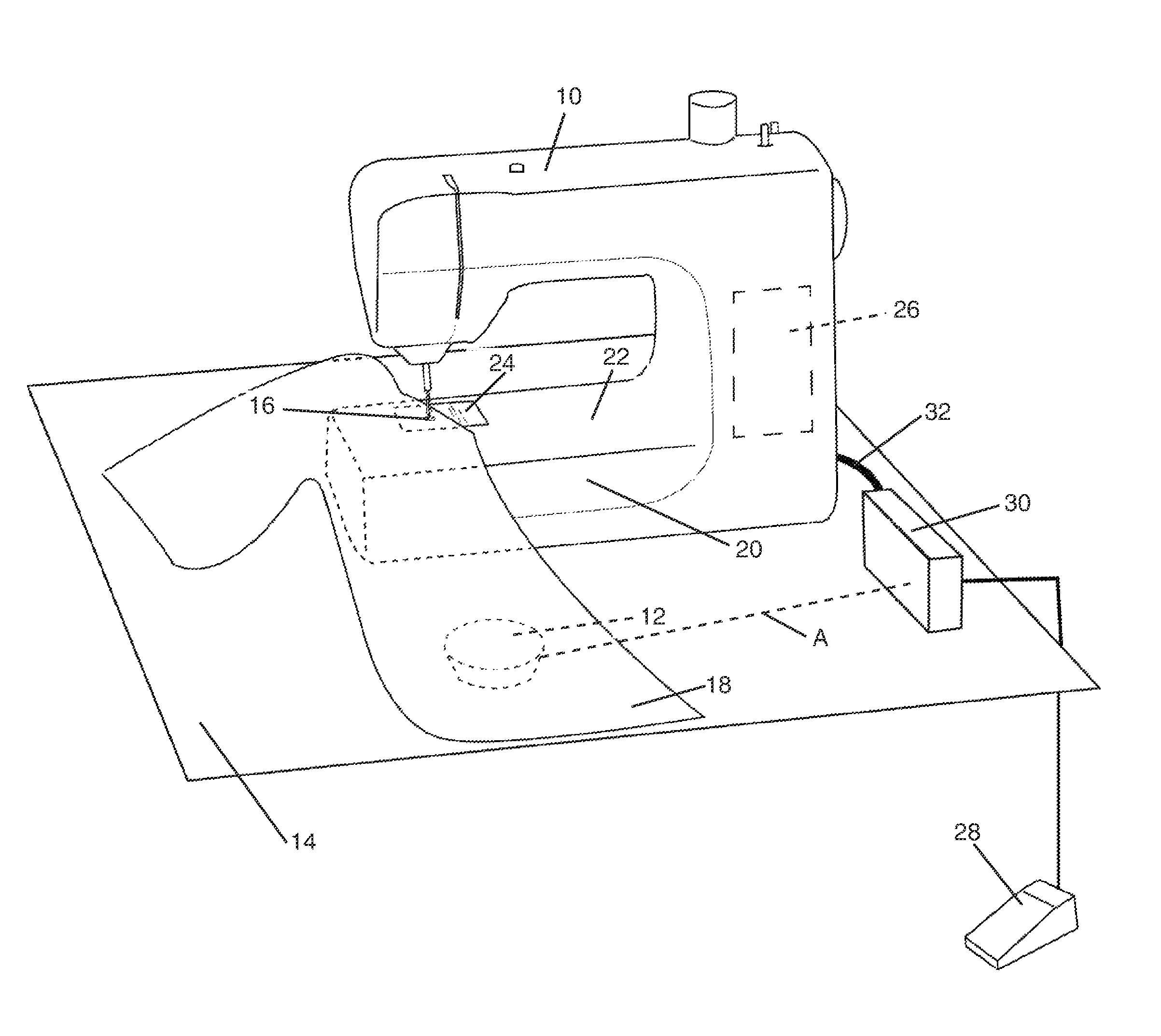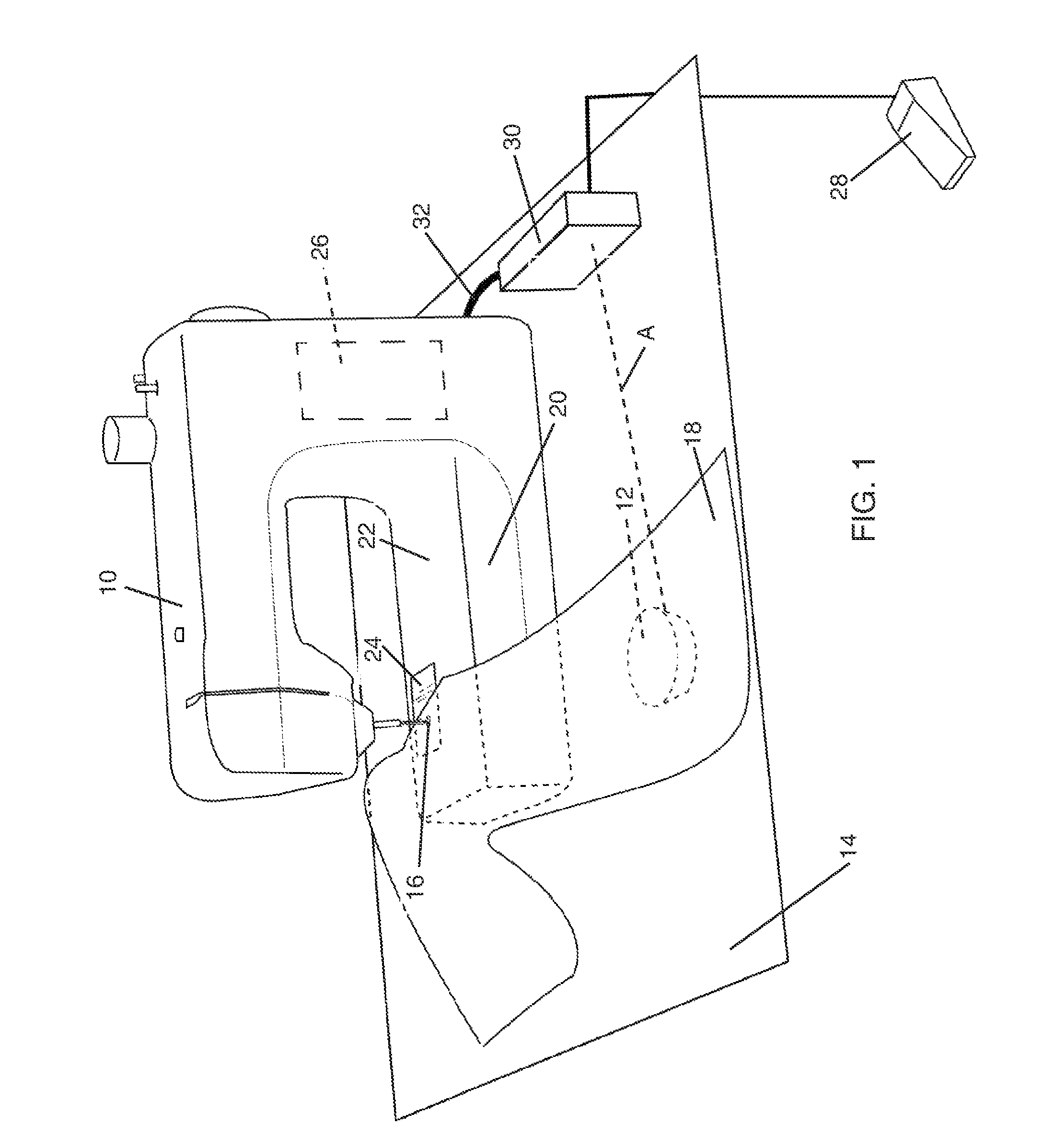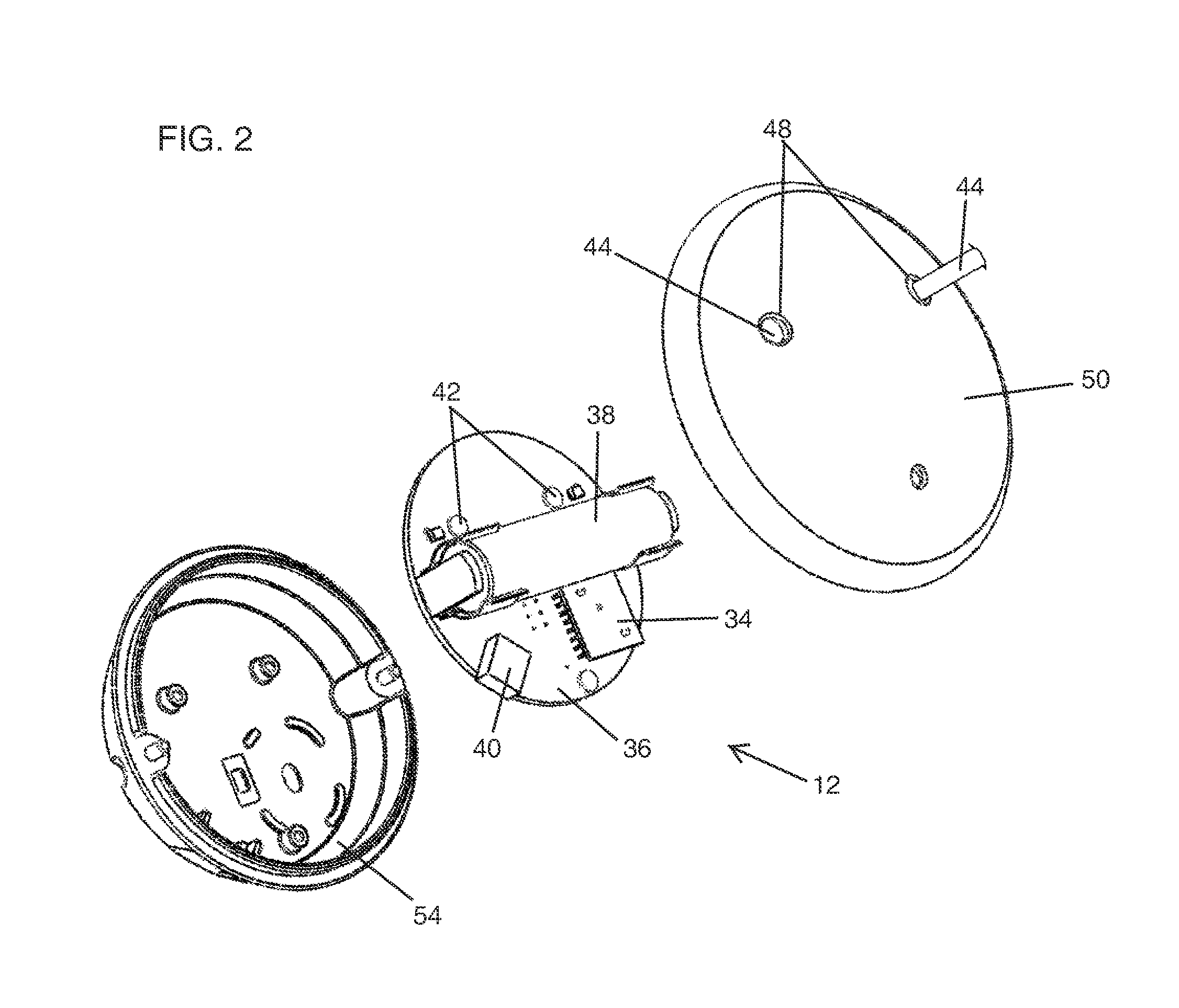System and method for controlling stitching using a movable sensor
a technology of movable sensor and stitching, which is applied in the direction of sewing machine control device, thin material handling, textiles and paper, etc., can solve the problems of unreliable movement data for controlling the movement of the needle, inconsistent stitch length, unevenness,
- Summary
- Abstract
- Description
- Claims
- Application Information
AI Technical Summary
Benefits of technology
Problems solved by technology
Method used
Image
Examples
Embodiment Construction
[0026]It will be readily understood that the components of this disclosure, as generally described and illustrated in the Figures herein, could be arranged and designed in a wide variety of different configurations. Thus, the following more detailed description of the embodiments of the system and method of the present disclosure, as represented in FIGS. 1 through 6, is not intended to limit the scope of the invention, as claimed, but is merely representative of presently preferred embodiments. Additionally, elements common between figures may retain the same numerical reference designation.
[0027]FIG. 1 shows a perspective view of one preferred embodiment using a sewing machine 10 with a movable detection device 12 for controlling and / or regulating the movement of the sewing needle. Stitching is controlled by detecting relative movement of the movable detection device 12 placed against a stationary reference surface 14 and communicating relative movement information to the sewing ma...
PUM
 Login to View More
Login to View More Abstract
Description
Claims
Application Information
 Login to View More
Login to View More - R&D
- Intellectual Property
- Life Sciences
- Materials
- Tech Scout
- Unparalleled Data Quality
- Higher Quality Content
- 60% Fewer Hallucinations
Browse by: Latest US Patents, China's latest patents, Technical Efficacy Thesaurus, Application Domain, Technology Topic, Popular Technical Reports.
© 2025 PatSnap. All rights reserved.Legal|Privacy policy|Modern Slavery Act Transparency Statement|Sitemap|About US| Contact US: help@patsnap.com



